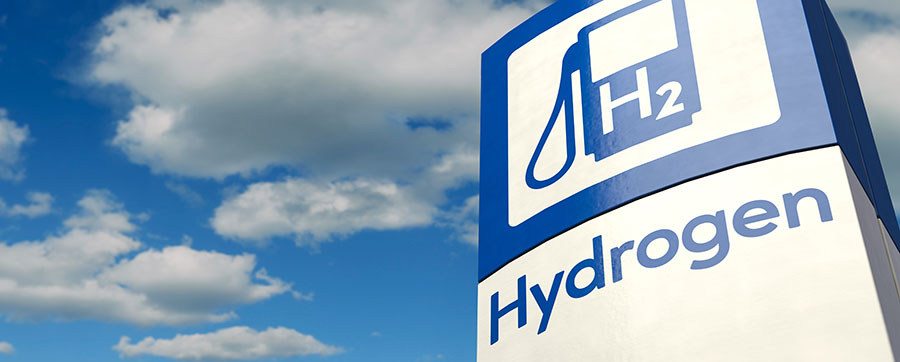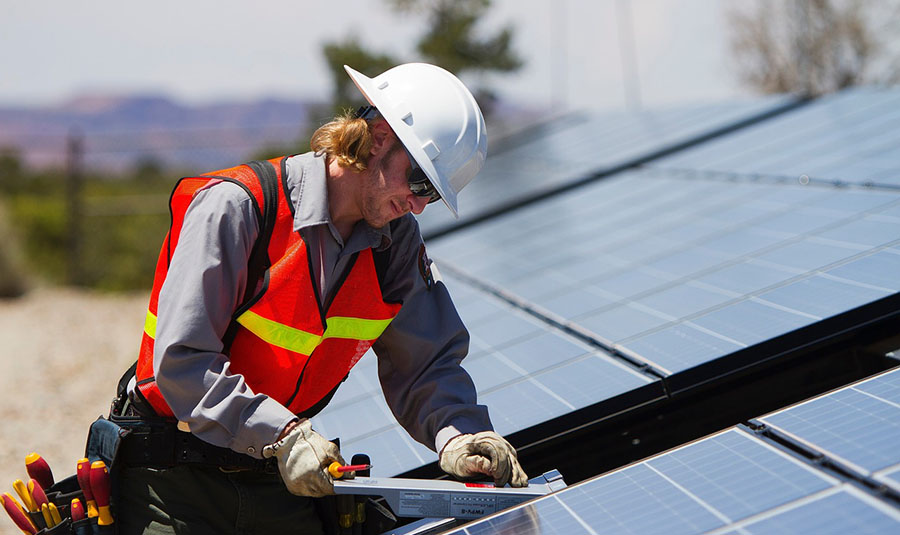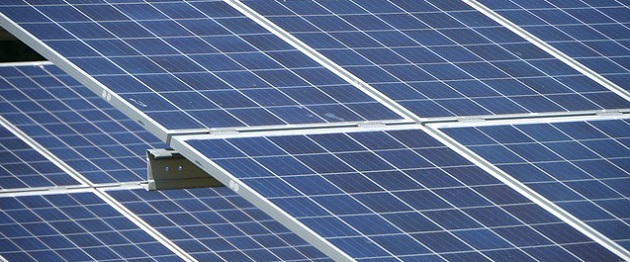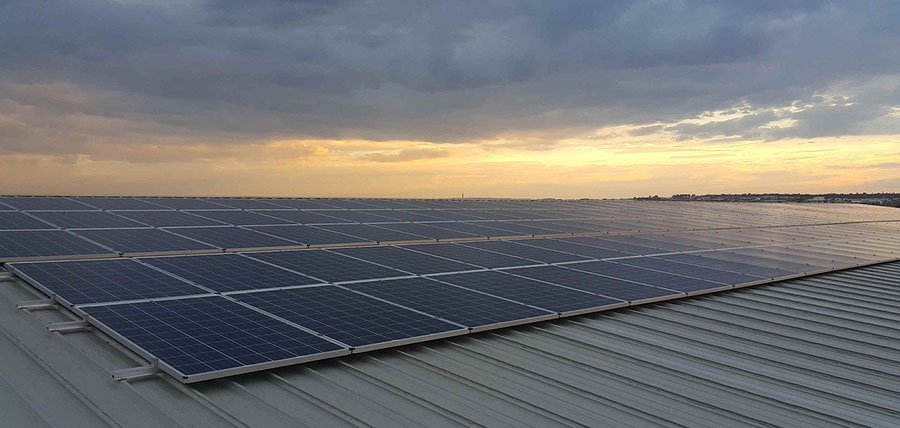Alternative Energy Stock Outlook
Source: Zacks Equity Research (4/3/12)
"Going forward, we expect to see a paradigm shift from a market hoisted by growing governmental/institutional support to one of stable growth."
Historically, the growth outlook of alternative energy companies has been inversely related to the prices of petroleum products and directly related to the state of the economy. While that relationship remains in place, other macroeconomic uncertainties are weighing on the sector's fortunes.
The more notable of such recent headwinds has the Eurozone debt crisis, which has been a threat to the global economy. The overall fear of contagion emanating from Europe has significantly subsided lately, though the region is expected to undergo an economic downturn as a result of the episode.
The outlook for the U.S. economy has meaningfully stabilized, with a host of variables showing distinct improvement over the last few months. The question now is with respect to the impact that the slowdown in China and recession in Europe will have on the U.S. growth momentum.
The apparent "decoupling" between improving U.S. prospects and subpar outlook abroad has nevertheless a bearing on the alternative energy sector, primarily through restricted government spending levels. This reduced demand environment due to overburdened government finances has come at a particularly inopportune time for alternative energy operators due to the sector's supply glut.
On the other hand, steadily rising oil prices and China's new solar power tariff regime are clear pointers for investors to look beyond the near-term earnings horizon for healthier performance. The U.S. Energy Department, in its monthly Short-Term Energy Outlook for March, increased its crude oil price forecast for 2012 by approximately 5%. The agency now expects that the West Texas Intermediate (WTI) oil will average $106/barrel (bbl) in fiscal 2012, up from the February projection of $101/bbl.
As per the U.S. Energy Information Administration (EIA), supply disruptions in the Middle East and Africa contributed to a significant increase in world crude oil prices. Consequently, we believe that the oil price upside will only boost the emerging positive alternative energy narrative.
A worldwide industry association for solar photovoltaic electricity market, the European Photovoltaic Industry Association (EPIA) forecasts that the power generated from solar modules in Europe could be competitive in relation to conventional forms of energy by the end of the current decade. The major solar markets under survey were Germany, Italy, France, Spain and Britain.
A number of traditional utility companies have growing alternative energy operations. But the fortunes of some of these companies, particularly those with significant fossil fuel exposures, are less attractive than their peers.
In the utilities space, we are less optimistic about the prospects of Great Plains Energy Incorporated (GXP), UniSource Energy Corporation (UNS), Xcel Energy Inc. (XEL), Unitil Corporation (UTL) and SCANA Corporation (SCG). Conversely, favorable rate cases and stable sales growth in their respective service areas make companies like Pike Electric Corporation (PIKE), CH Energy Group Inc. (CHG), Consolidated Edison Inc. (ED) and DTE Energy Company (DTE) attractive.
A major growth area in this space is solar energy. The U.S. has a lot of catching up to do, despite enormous potential, to get anywhere close to the global leaders. Solar Energy Industries Association (SEIA) is the U.S. trade association of approximately 1,100 companies in the solar energy industry. It estimates that in fiscal 2011 the U.S. solar energy industry grew 109% year over year to reach 1,855 megawatts (MW), which represents 7% of all photovoltaic (PV) globally, up from 887 MW and 5% of global installations in 2010.
According to SEIA, this unprecedented growth was spurred in part by declining installed solar photovoltaic system prices, which fell 20% in fiscal 2011 on the back of lower component costs, improved installation efficiency, expanded financing options, and a shift toward larger systems nationwide. In addition, the anticipated expiration of the U.S. government's Treasury Program, which ended on Dec. 31, 2011, drove developers to commission projects before the end of the year.
According to EPIA, the cumulative global installed PV capacity stood at almost 67.4 gigawatts (GW) at the end of 2011, compared to only 39.7 GW at the end of 2010. The agency reports that almost 21 GW of this growth occurred in Europe. In fiscal 2011 the two biggest markets, Italy and Germany, accounted for nearly 60% of global market growth. The number of markets reaching more than 1 GW of additional capacity during fiscal 2011 rose from three to six. In 2010 the top three markets were Germany, Italy and the Czech Republic; in 2011 Italy led the ranks followed by Germany, China, the U.S., France and Japan, each with over 1 GW of new capacity.
Here we take a look at the solar energy space and attempt to identify this nascent industry's strengths and weaknesses.
Opportunities
Environmental advantage: Solar power is one of the most benign electricity resources. Solar cells generate electricity without air or water emissions, noise, vibration, habitat impact or waste generation. Over time, rapid population growth, depletion of nonrenewable conventional sources, and escalating pollution levels will help shape a much more pronounced global focus on renewable projects.
The long-term bullishness is shared even by oil goliaths like Royal Dutch Shell Plc (RDS.A) and BP Plc. (BP), which expects that by fiscal 2050, one-third of the global energy needs will come from renewable sources.
Fuel risk advantage: Unlike fossil and nuclear fuels, solar energy has no risk of fuel price volatility or delivery risk. Although there is variability in the amount and timing of sunlight in the day, season and year, a properly sized and configured system can be designed to insure high reliability while providing a long-term, fixed-price electricity supply.
In light of the Fukushima Daichi episode in Japan, the global focus has tilted toward solar in a big way. Germany plans to phase out nuclear power plants by 2022. This move will definitely boost solar fortunes in one of its largest global markets.
Location advantage: Unlike other renewable resources such as hydroelectricity and wind power, solar power is generally located at a customer's site due to the universal availability of sunlight. As a result, solar power limits the expense and losses associated with transmission and distribution from large-scale electric plants to the end users. For most residential consumers seeking an environment-friendly power alternative, solar power is currently the only viable choice.
Environmental legislations: Alternative energy companies are increasingly benefiting from new legislation in the U.S. stipulating installation of renewable sources of electricity generation as mandated by Renewal Energy Standards (RES). At the federal level, Congress has extended the 30% federal investment tax credit (ITC) to both residential and commercial solar installations until Dec. 31, 2016. Also, under the American Reinvestment and Recovery Act (ARRA), the U.S. Treasury Department earlier implemented a program to issue cash grants in lieu of investment tax credit for renewable energy projects.
Subsidy programs: Governments, most notably in China, Japan, Canada, U.K., Australia, India and the Middle East, have increased their financial support for solar projects. In China, governmental authorities recently adopted a national feed-in tariff (FiT) policy for large scale alternative energy projects. China also expanded the Golden Sun Program, an upfront cost subsidy program, aimed primarily at distributed generation. In addition, according to the current draft of the 12th five-year plan for solar energy, the government intends to raise the 2015 goal for total cumulative solar energy capacity to 15 GW and 50 GW by 2020.
In Europe, the European Union's goal of a 20% share of renewable sources in the energy basket by 2020 will keep the flow of new projects going. Specific solar energy stocks under our coverage that stand to benefit from this environment with a Zacks #2 Rank (short-term Buy rating) include Ascent Solar Technologies Inc. (ASTI).
In Australia, the solar industry is driven by several regulatory initiatives that support the installation of solar PV modules in both rooftop and free-field applications, including the federal government’s nationwide Renewable Energy Target, which has set a renewable energy goal for Australia of 20% by 2020. Clean Energy Finance Corporation (CEFC) and Australian Renewable Energy Agency (ARENA), both established in 2011, will begin implementation in 2012. In India, the National Solar Mission includes a goal of installing 22 GW of solar power by 2022.
In the Middle East and Africa, several countries have announced sizeable solar targets, although policy mechanisms are not yet firmly established. In the kingdom of Saudi Arabia, a solar policy with targets and incentives is expected in 2012. The size of the program is expected to be tens of gigawatts of solar by 2030, or as early as 2020.
In the United Arab Emirates, Abu Dhabi has set a target of sourcing 7% of electricity supply from renewables by 2020 and in 2011 issued a tender for the first of three 100 MW PV projects. In January 2012, Dubai announced plans for a 1 GW solar farm by 2030. In Morocco, the government has set a 2 GW solar goal by 2020. Other markets such as Algeria, Egypt, Jordan, Kuwait, Oman, Qatar and Tunisia are also actively promoting solar and issuing tenders.
Fortunes tied to crude: Alternative energy stock prices generally rise and fall in direct proportion to the price of crude oil. While in times of high oil prices this may present an opportunity, it also increases volatility in the sector.
As per the latest release by the EIA, which provides energy statistics of the U.S. government, world crude consumption grew by more than 1 million barrels per day (MMb/d) in 2011 to a record-high level of 88.1 MMb/d from 87.1 MMb/d in 2010. In its monthly Short-Term Energy Outlook, the agency said that it expects global oil demand growth of 1.3 MMb/d in 2012 and 1.5 MMb/d in 2013. The agency assumes that demand will be essentially flat in North America and Europe but this will be more than made up by increased demand from the emerging economies.
Separately, the Organization of the Petroleum Exporting Countries (OPEC)—which supplies around 40% of the world's crude—predicts that global oil demand would increase by 1.1 MMb/d annually, reaching 88.9 MMb/d in 2012 from last year's 87.8 MMb/d.
Lastly, the third major energy consultative body, the Paris-based International Energy Agency (IEA), the energy-monitoring body of 28 industrialized countries, said that it expects world oil consumption to grow by 1.1 MMb/d in 2012 to 90 MMb/d.
Questions about China's growth outlook remain a key source of uncertainty in oil's demand projections. On the supply side, growing hostilities in the Persian Gulf region due to Iran's nuclear program remains a key risk factor for the global oil complex. The Iranian threat has been a major contributor to the recent surge in oil prices, a trend that is unlikely abate any time soon.
Weaknesses
Excess capacity: In the near term, the solar industry is facing the problem of excess solar cell and module capacity. Going by the trend of solar companies citing sluggish demand and high inventory levels, affecting margins, virtually the whole industry is in a pause. The earlier rush in vertical integration by individual players for self-reliance in their solar wafer/cell needs, has created a lot of unutilized capacity for the industry.
The near-term industry outlook is thus clouded by unnecessary inventory arising from a supply glut and a corresponding underutilization of capacity. This has led to industry-wide sharply falling average selling prices. Solar players like STR Holdings Inc. (STRI), ReneSola Ltd. (SOL) and Real Goods Solar Inc. (RSOL) are in for a difficult future in the near term.
Recent start-ups: A large number of these companies are recent start-ups with limited resources. As such, quite a few depend on their customers' ability to finance solar projects and are exposed to continuing near-term losses due to start-up costs. Companies such as JinkoSolar Holding Company Limited (JKS), Trina Solar Limited (TSL) and Yingli Green Energy Holding Co. Ltd. (YGE) come under this category.
Subsidy roll-back: Budgetary constraints have caused prime global solar markets like Germany, Italy, Australia, the UK and Taiwan to roll back a portion of their grants. Earlier, sales of solar players from the above countries witnessed a sharp rise mainly fueled by the rush to complete projects ahead of subsidy rollbacks.
Going forward, we expect to see a paradigm shift from a market hoisted by growing governmental/institutional support to one of stable growth. This may affect companies such as First Solar Inc. (FSLR) and SunPower Corporation (SPWR), which generate a substantial portion of sales from markets like Germany.
One of the prime solar market, Germany is consistently evaluating changes to the German Renewable Energy Law, or the EEG, and recently proposed significant and accelerated feed-in tariffs (FiTs) reductions for projects up to 10 MW and an elimination of FiTs for projects over 10 MW.
These proposed FiT changes, if adopted, would particularly impact the competitiveness in Germany of large-scale free field PV systems and modules to be installed in such systems. If these policy changes proposed by the German environment and economy ministers are approved without change by the German parliament, they will negatively affect long-term demand and price levels for PV products in Germany.
Also, the 30% grant in lieu of the federal investment tax credit under the ARRA expired on December 31, 2011 and, unless extended, will not be available for solar installations that begin construction on or after Jan. 1, 2012. If the program is not extended, total tax equity availability could be reduced which may adversely affect the ability to arrange financing for utility-scale projects and may adversely affect the attractiveness of the U.S. solar market.
New emerging technologies: The alternative energy industry remains an emerging sector with a consistent focus on the lowest-cost technology and cost-competitiveness using traditional means of electricity generation. This may prove disastrous for existing companies ruling the solar roost should a cheaper alternative emerge.
Zacks Equity Research
Zacks.com
The more notable of such recent headwinds has the Eurozone debt crisis, which has been a threat to the global economy. The overall fear of contagion emanating from Europe has significantly subsided lately, though the region is expected to undergo an economic downturn as a result of the episode.
The outlook for the U.S. economy has meaningfully stabilized, with a host of variables showing distinct improvement over the last few months. The question now is with respect to the impact that the slowdown in China and recession in Europe will have on the U.S. growth momentum.
The apparent "decoupling" between improving U.S. prospects and subpar outlook abroad has nevertheless a bearing on the alternative energy sector, primarily through restricted government spending levels. This reduced demand environment due to overburdened government finances has come at a particularly inopportune time for alternative energy operators due to the sector's supply glut.
On the other hand, steadily rising oil prices and China's new solar power tariff regime are clear pointers for investors to look beyond the near-term earnings horizon for healthier performance. The U.S. Energy Department, in its monthly Short-Term Energy Outlook for March, increased its crude oil price forecast for 2012 by approximately 5%. The agency now expects that the West Texas Intermediate (WTI) oil will average $106/barrel (bbl) in fiscal 2012, up from the February projection of $101/bbl.
As per the U.S. Energy Information Administration (EIA), supply disruptions in the Middle East and Africa contributed to a significant increase in world crude oil prices. Consequently, we believe that the oil price upside will only boost the emerging positive alternative energy narrative.
A worldwide industry association for solar photovoltaic electricity market, the European Photovoltaic Industry Association (EPIA) forecasts that the power generated from solar modules in Europe could be competitive in relation to conventional forms of energy by the end of the current decade. The major solar markets under survey were Germany, Italy, France, Spain and Britain.
A number of traditional utility companies have growing alternative energy operations. But the fortunes of some of these companies, particularly those with significant fossil fuel exposures, are less attractive than their peers.
In the utilities space, we are less optimistic about the prospects of Great Plains Energy Incorporated (GXP), UniSource Energy Corporation (UNS), Xcel Energy Inc. (XEL), Unitil Corporation (UTL) and SCANA Corporation (SCG). Conversely, favorable rate cases and stable sales growth in their respective service areas make companies like Pike Electric Corporation (PIKE), CH Energy Group Inc. (CHG), Consolidated Edison Inc. (ED) and DTE Energy Company (DTE) attractive.
A major growth area in this space is solar energy. The U.S. has a lot of catching up to do, despite enormous potential, to get anywhere close to the global leaders. Solar Energy Industries Association (SEIA) is the U.S. trade association of approximately 1,100 companies in the solar energy industry. It estimates that in fiscal 2011 the U.S. solar energy industry grew 109% year over year to reach 1,855 megawatts (MW), which represents 7% of all photovoltaic (PV) globally, up from 887 MW and 5% of global installations in 2010.
According to SEIA, this unprecedented growth was spurred in part by declining installed solar photovoltaic system prices, which fell 20% in fiscal 2011 on the back of lower component costs, improved installation efficiency, expanded financing options, and a shift toward larger systems nationwide. In addition, the anticipated expiration of the U.S. government's Treasury Program, which ended on Dec. 31, 2011, drove developers to commission projects before the end of the year.
According to EPIA, the cumulative global installed PV capacity stood at almost 67.4 gigawatts (GW) at the end of 2011, compared to only 39.7 GW at the end of 2010. The agency reports that almost 21 GW of this growth occurred in Europe. In fiscal 2011 the two biggest markets, Italy and Germany, accounted for nearly 60% of global market growth. The number of markets reaching more than 1 GW of additional capacity during fiscal 2011 rose from three to six. In 2010 the top three markets were Germany, Italy and the Czech Republic; in 2011 Italy led the ranks followed by Germany, China, the U.S., France and Japan, each with over 1 GW of new capacity.
Here we take a look at the solar energy space and attempt to identify this nascent industry's strengths and weaknesses.
Opportunities
Environmental advantage: Solar power is one of the most benign electricity resources. Solar cells generate electricity without air or water emissions, noise, vibration, habitat impact or waste generation. Over time, rapid population growth, depletion of nonrenewable conventional sources, and escalating pollution levels will help shape a much more pronounced global focus on renewable projects.
The long-term bullishness is shared even by oil goliaths like Royal Dutch Shell Plc (RDS.A) and BP Plc. (BP), which expects that by fiscal 2050, one-third of the global energy needs will come from renewable sources.
Fuel risk advantage: Unlike fossil and nuclear fuels, solar energy has no risk of fuel price volatility or delivery risk. Although there is variability in the amount and timing of sunlight in the day, season and year, a properly sized and configured system can be designed to insure high reliability while providing a long-term, fixed-price electricity supply.
In light of the Fukushima Daichi episode in Japan, the global focus has tilted toward solar in a big way. Germany plans to phase out nuclear power plants by 2022. This move will definitely boost solar fortunes in one of its largest global markets.
Location advantage: Unlike other renewable resources such as hydroelectricity and wind power, solar power is generally located at a customer's site due to the universal availability of sunlight. As a result, solar power limits the expense and losses associated with transmission and distribution from large-scale electric plants to the end users. For most residential consumers seeking an environment-friendly power alternative, solar power is currently the only viable choice.
Environmental legislations: Alternative energy companies are increasingly benefiting from new legislation in the U.S. stipulating installation of renewable sources of electricity generation as mandated by Renewal Energy Standards (RES). At the federal level, Congress has extended the 30% federal investment tax credit (ITC) to both residential and commercial solar installations until Dec. 31, 2016. Also, under the American Reinvestment and Recovery Act (ARRA), the U.S. Treasury Department earlier implemented a program to issue cash grants in lieu of investment tax credit for renewable energy projects.
Subsidy programs: Governments, most notably in China, Japan, Canada, U.K., Australia, India and the Middle East, have increased their financial support for solar projects. In China, governmental authorities recently adopted a national feed-in tariff (FiT) policy for large scale alternative energy projects. China also expanded the Golden Sun Program, an upfront cost subsidy program, aimed primarily at distributed generation. In addition, according to the current draft of the 12th five-year plan for solar energy, the government intends to raise the 2015 goal for total cumulative solar energy capacity to 15 GW and 50 GW by 2020.
In Europe, the European Union's goal of a 20% share of renewable sources in the energy basket by 2020 will keep the flow of new projects going. Specific solar energy stocks under our coverage that stand to benefit from this environment with a Zacks #2 Rank (short-term Buy rating) include Ascent Solar Technologies Inc. (ASTI).
In Australia, the solar industry is driven by several regulatory initiatives that support the installation of solar PV modules in both rooftop and free-field applications, including the federal government’s nationwide Renewable Energy Target, which has set a renewable energy goal for Australia of 20% by 2020. Clean Energy Finance Corporation (CEFC) and Australian Renewable Energy Agency (ARENA), both established in 2011, will begin implementation in 2012. In India, the National Solar Mission includes a goal of installing 22 GW of solar power by 2022.
In the Middle East and Africa, several countries have announced sizeable solar targets, although policy mechanisms are not yet firmly established. In the kingdom of Saudi Arabia, a solar policy with targets and incentives is expected in 2012. The size of the program is expected to be tens of gigawatts of solar by 2030, or as early as 2020.
In the United Arab Emirates, Abu Dhabi has set a target of sourcing 7% of electricity supply from renewables by 2020 and in 2011 issued a tender for the first of three 100 MW PV projects. In January 2012, Dubai announced plans for a 1 GW solar farm by 2030. In Morocco, the government has set a 2 GW solar goal by 2020. Other markets such as Algeria, Egypt, Jordan, Kuwait, Oman, Qatar and Tunisia are also actively promoting solar and issuing tenders.
Fortunes tied to crude: Alternative energy stock prices generally rise and fall in direct proportion to the price of crude oil. While in times of high oil prices this may present an opportunity, it also increases volatility in the sector.
As per the latest release by the EIA, which provides energy statistics of the U.S. government, world crude consumption grew by more than 1 million barrels per day (MMb/d) in 2011 to a record-high level of 88.1 MMb/d from 87.1 MMb/d in 2010. In its monthly Short-Term Energy Outlook, the agency said that it expects global oil demand growth of 1.3 MMb/d in 2012 and 1.5 MMb/d in 2013. The agency assumes that demand will be essentially flat in North America and Europe but this will be more than made up by increased demand from the emerging economies.
Separately, the Organization of the Petroleum Exporting Countries (OPEC)—which supplies around 40% of the world's crude—predicts that global oil demand would increase by 1.1 MMb/d annually, reaching 88.9 MMb/d in 2012 from last year's 87.8 MMb/d.
Lastly, the third major energy consultative body, the Paris-based International Energy Agency (IEA), the energy-monitoring body of 28 industrialized countries, said that it expects world oil consumption to grow by 1.1 MMb/d in 2012 to 90 MMb/d.
Questions about China's growth outlook remain a key source of uncertainty in oil's demand projections. On the supply side, growing hostilities in the Persian Gulf region due to Iran's nuclear program remains a key risk factor for the global oil complex. The Iranian threat has been a major contributor to the recent surge in oil prices, a trend that is unlikely abate any time soon.
Weaknesses
Excess capacity: In the near term, the solar industry is facing the problem of excess solar cell and module capacity. Going by the trend of solar companies citing sluggish demand and high inventory levels, affecting margins, virtually the whole industry is in a pause. The earlier rush in vertical integration by individual players for self-reliance in their solar wafer/cell needs, has created a lot of unutilized capacity for the industry.
The near-term industry outlook is thus clouded by unnecessary inventory arising from a supply glut and a corresponding underutilization of capacity. This has led to industry-wide sharply falling average selling prices. Solar players like STR Holdings Inc. (STRI), ReneSola Ltd. (SOL) and Real Goods Solar Inc. (RSOL) are in for a difficult future in the near term.
Recent start-ups: A large number of these companies are recent start-ups with limited resources. As such, quite a few depend on their customers' ability to finance solar projects and are exposed to continuing near-term losses due to start-up costs. Companies such as JinkoSolar Holding Company Limited (JKS), Trina Solar Limited (TSL) and Yingli Green Energy Holding Co. Ltd. (YGE) come under this category.
Subsidy roll-back: Budgetary constraints have caused prime global solar markets like Germany, Italy, Australia, the UK and Taiwan to roll back a portion of their grants. Earlier, sales of solar players from the above countries witnessed a sharp rise mainly fueled by the rush to complete projects ahead of subsidy rollbacks.
Going forward, we expect to see a paradigm shift from a market hoisted by growing governmental/institutional support to one of stable growth. This may affect companies such as First Solar Inc. (FSLR) and SunPower Corporation (SPWR), which generate a substantial portion of sales from markets like Germany.
One of the prime solar market, Germany is consistently evaluating changes to the German Renewable Energy Law, or the EEG, and recently proposed significant and accelerated feed-in tariffs (FiTs) reductions for projects up to 10 MW and an elimination of FiTs for projects over 10 MW.
These proposed FiT changes, if adopted, would particularly impact the competitiveness in Germany of large-scale free field PV systems and modules to be installed in such systems. If these policy changes proposed by the German environment and economy ministers are approved without change by the German parliament, they will negatively affect long-term demand and price levels for PV products in Germany.
Also, the 30% grant in lieu of the federal investment tax credit under the ARRA expired on December 31, 2011 and, unless extended, will not be available for solar installations that begin construction on or after Jan. 1, 2012. If the program is not extended, total tax equity availability could be reduced which may adversely affect the ability to arrange financing for utility-scale projects and may adversely affect the attractiveness of the U.S. solar market.
New emerging technologies: The alternative energy industry remains an emerging sector with a consistent focus on the lowest-cost technology and cost-competitiveness using traditional means of electricity generation. This may prove disastrous for existing companies ruling the solar roost should a cheaper alternative emerge.
Zacks Equity Research
Zacks.com



























































